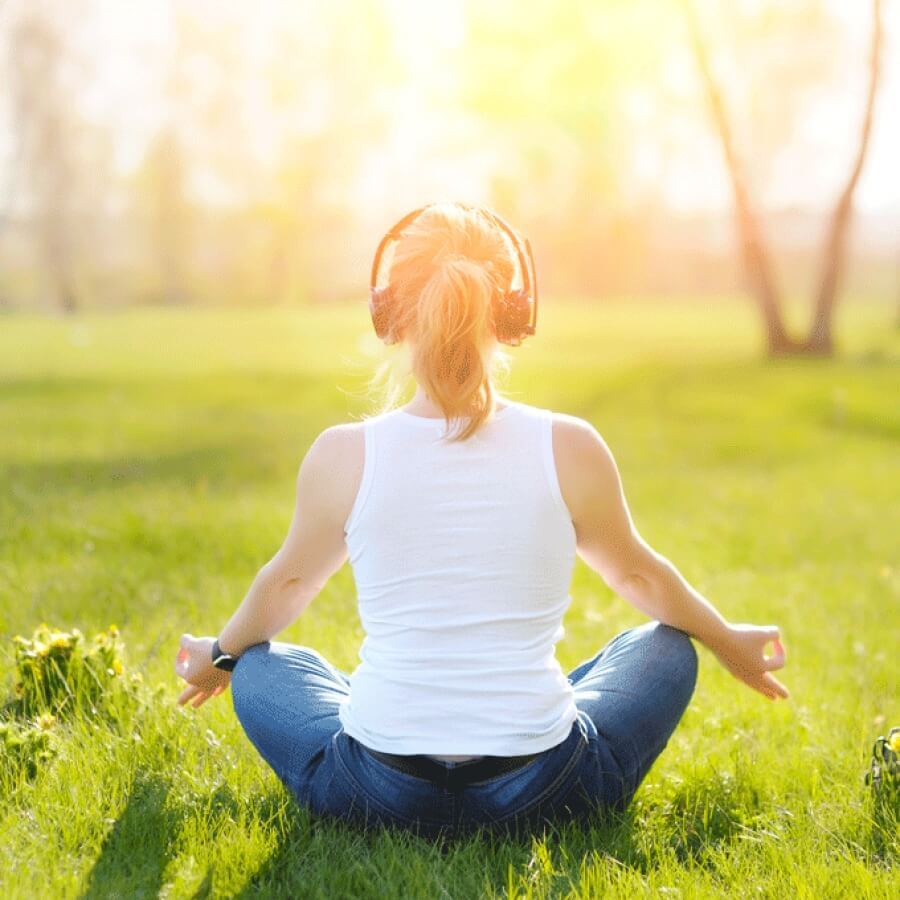
Seashell breathing is an easy way to reduce anxiety. It creates internal warmth, and transports you to nature. Lewis Howes, the author of this podcast, teaches you how to do it. He encourages viewers take deep breaths, starting from the bottom. This technique can be used standing up, sitting down, or lying down. For the beginning, don't wear tight clothing. Place your arms on the arms or back of your chair and you can then sit or lay down.
This technique can be practiced at any time during the day. This breathing technique works by engaging your sympathetic nervous system, which controls your body's fight-or-flight response. By relaxing your body, you are affecting your mind and body at the same time. You need to find a balance between your two systems by engaging your parasympathetic nervous system. Breathing too deep can increase stress and cause your body to produce more adrenaline. This will make you feel more anxious.

Another simple breathing exercise that helps with anxiety is the pursed -lip technique. It is simple and easy to do anywhere. It takes just a few moments and you can do it yourself without any help. This breathing exercise is a great way to control your emotions and get rid of anxiety. You can perform this breathing exercise in many different ways, some more effective than others.
The dirga Swasam pranayama is an excellent breathing exercise to reduce anxiety. This breathing exercise targets the upper chest, abdomen, and diaphragm. For this exercise, you will need to be comfortable. You can sit down or lie down. To perform this exercise, you should close your mouth and breathe deeply. During this time, you should focus on your breathing. You should feel fullness, or emptiness in the lungs. This will help you calm your mind and alleviate your anxiety.
Breathing exercises for anxiety can be a great way to reduce negative thoughts. A specific type of breathing exercise is recommended for those suffering from anxiety. This is a simple and quick exercise that takes only a few minutes. It will surprise you how much you notice the difference after you have used it for several days. It will make you feel happier and help you to manage any situation more easily.

The breathing exercises for anxiety can be done anywhere, anytime, and anywhere you feel anxious. Try to do them in a quiet space. You will feel calmer if you are anxious. This will help you to be more focused on the now and focus on your goals. Regular practice of these exercises will make you more focused. And you'll be surprised by how much easier it will be when you've done them for years.
FAQ
What's the problem with BMI?
BMI stands to Body Mass Index. It is a measurement of body weight based on height. This formula calculates BMI.
The weight of a kilogram divided by its squared height in meters.
The score is expressed as a number between 0 and 25. A score of 18.5+ indicates that you are overweight. A score higher than 23 indicates that you are obese.
A person who is 100 kg in weight and 1.75m in height will have a 22 BMI.
Exercise: Is it good or bad for immunity?
Exercise is good for your immune systems. Your body makes white blood cells that fight infections when you exercise. Your body also removes toxins. Exercise is a great way to prevent heart disease, cancer, and other diseases. Exercise can help reduce stress.
Exercising too often can cause your immune system to be weaker. Your muscles can become sore if you exercise too much. This can lead to inflammation and swelling. The body then needs to make more antibodies to fight infection. Problem is, extra antibodies can trigger allergies and other autoimmune conditions.
So, don't overdo it!
How often should I exercise?
Exercise is essential for maintaining a healthy lifestyle. However, there isn't a set amount of time you must spend working out. Finding something that you love and sticking with it is the key.
When you exercise three times per week, aim for 20-30 minutes moderate intensity. Moderate intensity is when you still have to breathe hard after the workout. This type workout burns about 300 calories.
If you prefer to walk, go for 10 minute walks four days a week. Walking is easy on the joints and has low impact.
You can also run for 15 minutes, three times per week. Running is a great exercise to build muscle tone and burn excess calories.
Start slowly if you aren't used to doing exercise. You can start with only 5 minutes per week of cardio. Gradually increase the amount of cardio you do until you reach your goal.
What are the 10 most delicious foods?
These are the top 10 foods to eat.
-
Avocados
-
Berries
-
Broccoli
-
Cauliflower
-
Eggs
-
Fish
-
Grains
-
Nuts
-
Oats
-
Salmon
Statistics
- This article received 11 testimonials and 86% of readers who voted found it helpful, earning it our reader-approved status. (wikihow.com)
- In both adults and children, the intake of free sugars should be reduced to less than 10% of total energy intake. (who.int)
- nutrients.[17]X Research sourceWhole grains to try include: 100% whole wheat pasta and bread, brown rice, whole grain oats, farro, millet, quinoa, and barley. (wikihow.com)
- The Dietary Guidelines for Americans recommend keeping added sugar intake below 10% of your daily calorie intake, while the World Health Organization recommends slashing added sugars to 5% or less of your daily calories for optimal health (59Trusted (healthline.com)
External Links
How To
What does "vitamin" actually mean?
Vitamins are organic compounds that can be found in foods. Vitamins are essential for our bodies to absorb nutrients from the foods we eat. Vitamins cannot be made by the body; they must be taken from food.
There are two types vitamins: water soluble or fat soluble. Water soluble vitamins dissolve easily in water. Examples include vitamin C,B1 (thiamine), B2 (riboflavin), B3 (niacin), B6 (pyridoxine), folic acid, biotin, pantothenic acid, and choline. The liver and fat soluble vitamins are stored within the liver and in fatty tissue. Examples include vitamin D, E, K, A, and beta carotene.
Vitamins are classified according to their biological activity. There are eight major groups of vitamins:
-
A - vital for healthy growth.
-
C - important for proper nerve function and energy production.
-
D - essential for healthy bones, teeth, and gums.
-
E is necessary for good vision, reproduction.
-
K - Required for healthy nerves and muscles.
-
P - vital for building strong bones andteeth.
-
Q - Aids digestion and iron absorption
-
R - Required for red blood cell production
The recommended daily allowance (RDA), for vitamins, varies depending upon age, gender, or physical condition. The U.S. Food and Drug Administration (FDA) sets the RDA values.
For adults 19 years and over, the RDA of vitamin A is 400mg per day. Because it is essential for the development of the fetus, pregnant women should consume 600 micrograms per daily. Children ages 1-8 require 900 micrograms per day. Infants under one year of age require 700 micrograms per day, but this amount decreases to 500 micrograms per day between 9 months and 12 months of age.
Children aged 1-18 years need 800 micrograms daily, while children overweight require 1000 micrograms per days. Children who are severely obese or underweight will need 1200 micrograms each day.
Children aged 4-8 years old who have been diagnosed as having anemia require 2200 micrograms of vitamin C per day.
2000 micrograms per person is necessary for general health. Mothers who are pregnant, nursing, or have a high nutrient need will require 3000 micrograms a day.
Adults over 70 require 1500 micrograms each day, since they lose around 10% of their muscle mass every decade.
Women who are pregnant and lactating need more nutrients than the RDA. Pregnant mothers need 4000 micrograms per daily during pregnancy and 2500 after giving birth. Breastfeeding mothers need 5000 micrograms per day when breast milk is being produced.